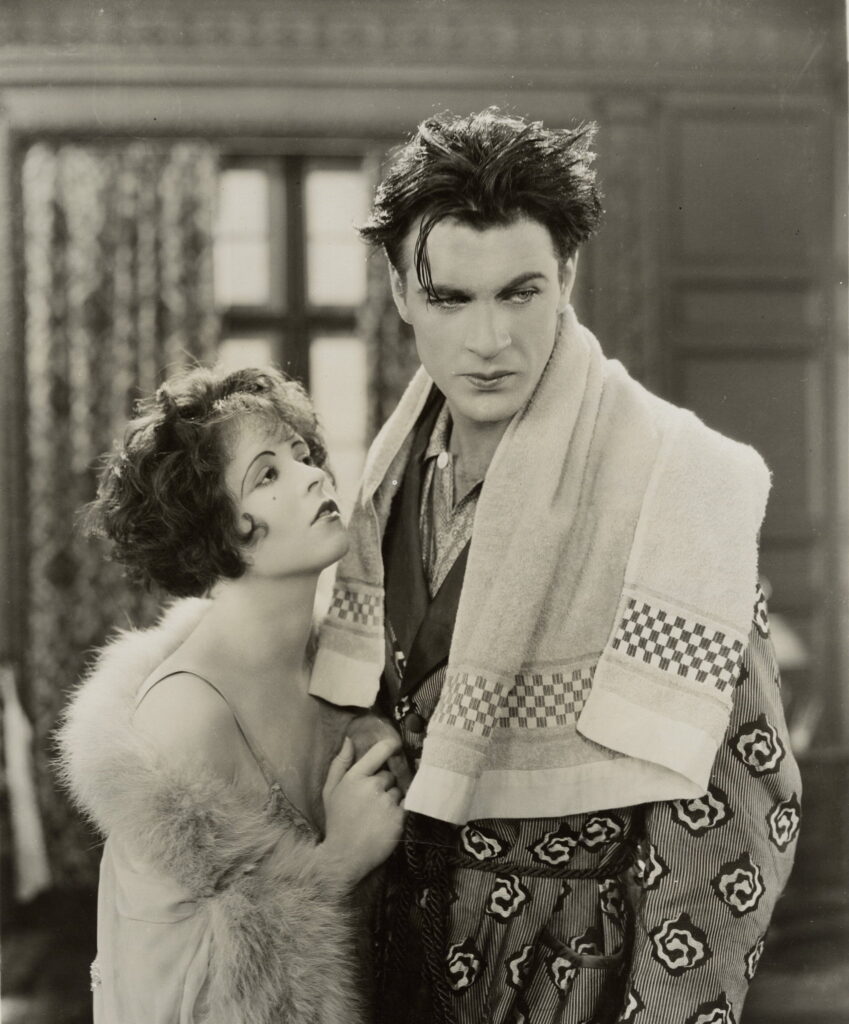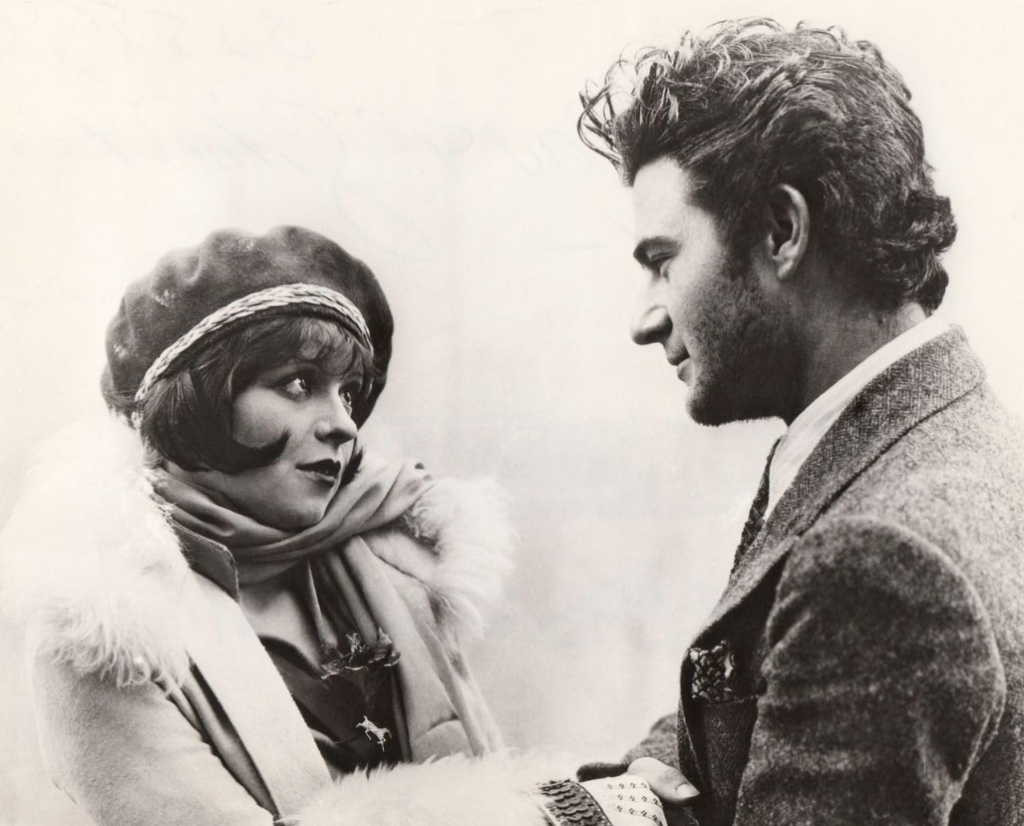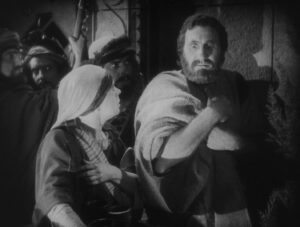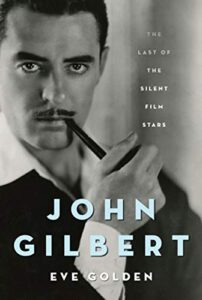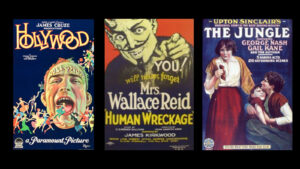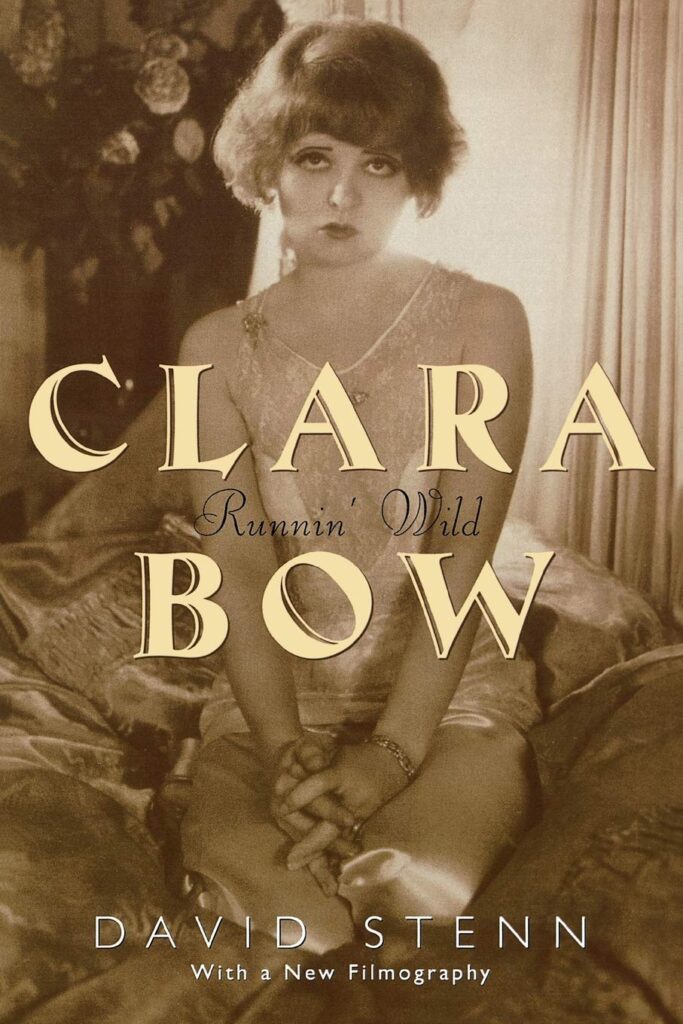
During the peak of her popularity, Clara Bow was Hollywood’s biggest box office star and a worldwide 1920s cultural phenomenon. Only working in pictures for a decade before an early retirement and retreat from public life in her late 20s, Clara won over the hearts of millions of movie fans around the world and cemented herself as one of the most recognizable sex symbols ever to grace the screen. Stenn’s biography of Clara captures her talent as an actress and her alluring star persona while examining Bow’s tumultuous private life that differed wildly from her glamourous screen image.
Stenn moves through each period of her life, from her days of poverty in Brooklyn to her breakthrough in acting and subsequent Hollywood career to her decades of reclusive retirement, contextualizing Clara’s decisions and life circumstances. Stenn details how Bow’s poverty and unstable family situation growing up shaped her life and behavior while working in Hollywood and during retirement. The book covers the various romantic relationships Clara had, with such stars and directors as Gilbert Roland, Gary Cooper, Victor Fleming, and later husband Rex Bell, and her fights with executives who repeatedly exploited her talents and naivety, underpaying and overworking the biggest money-making flapper of the 1920s.
Stenn works best when discussing the behind-the-scenes of various films, Clara’s personal relationships with fellow actors, studio executives, and directors, and the films themselves. Watching a handful of films discussed in the biography while reading the book proved how astute Stenn’s observations were of her screen persona informed by her personal life events at the time of filming. Whether discussing a forgotten, formula movie early on in her career or a career-defining film like It, Stenn goes to the same lengths to provide interesting facts about the production of the film, the contemporary reaction from fans and critics, and what Clara brought to the picture.
Another interesting aspect of the biography was the myriad of quotes included from those who knew or interacted with Clara during her life. Having written the book in the late 1980s, Stenn uses quotes from interviews with some of Clara’s close friends, mid-level studio executives, and a few acquaintances. Their observations and memories were quite frank and added an extra dimension to the retelling of Clara’s life and her off-screen mindset and demeanor.
Clara Bow, at the height of her popularity, and Gary Cooper, at the start of his career, in Children of Divorce (1927). Bow and Cooper had a short-lived relationship after meeting on the set of Wings (1927).
Despite the complicated feelings many in Hollywood had towards her in her prime, the book doesn’t give credence to any Hollywood Babylon-type slander against Bow. Stenn avoids sensationalizing Clara’s much-rumored love life and instead relies on his rigorous research and admiration for Bow’s talent to paint a picture of Clara’s personality. Despite the heavy topics of parental abuse, failed relationships, and mental illness, Stenn’s biography manages to be direct and frank but also celebratory of the many accomplishments of Bow’s short career. Because of several tragedies, from familial abuse to highly publicized court cases, the book can get to be a bit of a downer but that is to be expected of many Hollywood biographies.
While some may be tempted to reduce Bow to a simple screen siren and sex symbol, Stenn clearly shows his admiration for Bow’s career and her once-in-a-generation acting talent. In a world heavily influenced by method actors, we sometimes fail to acknowledge the talent of actors when we don’t see them capital-A acting. According to director Frank Tuttle, Clara could express almost any emotion at a moment’s notice without any advanced preparation. Now that is talent! Even today, watching Clara Bow in any of her big or small pictures, she always oozes personality and conveys natural, playful energy unique in all of cinema.
Clara Bow with frequent co-star, one-time fiancee, and life-long friend Gilbert Roland in 1925’s The Plastic Age.
Stenn pays just as much attention to detail in his chapters that cover Clara Bow’s life after retiring in 1933 from the screen as he does when he discusses her film career. These last chapters, although quite downbeat describing Clara’s reclusive retirement as a result of her inability to healthily process traumatic experiences from her youth, show the vulnerable Clara hidden behind the strong, confident flapper characters that cemented her image in Hollywood’s memory forever. Perhaps Stenn’s final observation is his most accurate: “the ‘It’ Girl was who Clara wished she were like. With her films as her legacy, that wish has finally been granted” (283).
In short, Stenn’s biography of Clara Bow does a wonderful job of unpacking the events of her tumultuous life, highlighting Bow’s unrivaled acting talent, and celebrating the legacy she left behind for all of us to enjoy for years to come.
This book review is part of the 2021 Summer Reading Classic Film Book Challenge hosted by Raquel Stecher’s Out of the Past blog. Check out the list of the classic film books I am reviewing this summer and great reviews from other bloggers.

